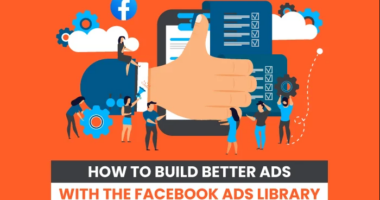In a world where content is king, how do you build a content marketing strategy that keeps your brand top of mind? What tactics should you use? What does success look like? How do you measure it?
For many years B2B content creators have been able to generate massive content marketing revenue by creating content, sharing it with their network of contacts, and then generating leads and revenue from the part of the B2B buying process that takes place after the content has been shared.
When it comes to creating a content strategy, you don’t want to overthink it. In fact, you can create a simple content strategy in 20 minutes with a few basic steps. 1. Create a content roadmap. A content roadmap is a high-level, high-level roadmap of all the blog posts you’ll write for your website, blog, and other online publications. 2. Think about your target audience. Think about how to target your blog posts so they’re relevant to your audience’s specific interests. 3. Create a content calendar. Create a content calendar that shows all the blog posts you’ll publish over a one-month period. 4. Create a content strategy. Divide all the blog. Read more about b2b content ideas and let us know what you think.
B2B and B2C content marketing need very different approaches. Regardless of whether you’re targeting companies or individual customers, one thing stays constant: content is crucial.
Content is how you raise brand recognition, gain consumer confidence, and empower them to solve their issues. However, you can’t simply write a blog article or run a sponsored ad and expect to see results.
To achieve your marketing objectives, you’ll need a focused B2B content marketing plan.
Allow me to demonstrate why a plan is so critical and assist you in determining how to contact those key business prospects.
What Are the Benefits of Having a B2B Content Marketing Strategy?
A content marketing strategy is similar to a plan or a roadmap. A marketing plan is a collection of principles that will assist you go from point A to point B, but it isn’t set in stone.
You’re more likely to get lost if you don’t have a map. You’re more likely to lose sight of your company objectives and struggle to get back on track.
In order to reach your target customers in the quickest time feasible, you’ll need a marketing plan to assist you produce the appropriate content at the right moment.
However, you can’t employ any old content marketing approach.
B2B content marketing has distinct difficulties than B2C content marketing, as previously stated. You target other companies with B2B, while you target individual customers with B2C.
While influencer marketing and emotional product launch campaigns may excite consumers, they are unlikely to persuade companies. Businesses, on the other hand, want authoritative material.
They want meaningful, actionable data to help them solve real-world business problems and develop their businesses. A well-thought-out marketing plan may assist you in developing the material required to wow this demographic.
How to Create a Content Marketing Strategy for B2B Companies

Every content marketing approach for B2B companies is different. Successful content marketing initiatives, on the other hand, usually begin with well defined objectives and a clear knowledge of your long-term objectives.
Remember not to be intimidated by the concept of a marketing “strategy.” Once you understand what’s required, getting started is really easy, so if you’re ready to launch a successful content marketing strategy, here is place to start.
1. Determine Who Your Target Audience Is and What Their Needs Are
Nothing is more crucial than your user base.
Remember that the goal of producing content is to convert your audience into paying customers, therefore it must cater to their particular requirements. Your audience will not go through your sales funnel if your content does not connect with them.
But how can you figure out who your target audience is?
- Create your buyer personas first.
- Then divide your target audience into subgroups depending on factors such as purchasing behavior.
- Decide if you want to target all of these groupings or just one or two.
- You may customize your content to meet the needs of your target audience after you’ve identified them.
Finally, you must evaluate what matters to your primary audience, therefore you must first discover their issues and then explore how you might address them via your content.
2. Use Micro-Targeting to Focus Your Attention
You’ve discovered your target audience, know what they care about, and are ready to provide them with an excellent user experience.
Now it’s time to go online and locate such companies in order to raise brand recognition. But how can you make sure your information reaches the appropriate people? It all boils down to selecting the appropriate short and longtail keywords.
Microtargeting is a good place to start. You may utilize analytics data to disclose important information like buyer behavior, preferences, and popular search phrases or keywords via microtargeting. Then, in your content, you may use a range of common keywords to assist your audience discover you on Google and other search engines.
Ubersuggest is a great resource for keyword research. Enter a main term, such as “health insurance,” then browse the “keyword suggestions” section for ideas:
Keywords that are carefully selected may help you target the companies that are most likely to need your services.
3. Find Out Who Your Niche’s Competitors Are
Unless you’re in a really unique niche, there’s a good chance you’ll be up against a lot of competition for your audience’s business.
Examine what makes them successful, and see what they have to offer your target market. What can you provide that makes you stand out from the crowd?
You’ll need a unique selling point (USP) to attract consumers, so think about what you can do better than your rivals and emphasize that while marketing your products and services to potential customers. Here are some pointers on how to go about it:
- Determine who your competition are.
- Examine their advantages and disadvantages.
- Clarify what makes your company stand out and create a unique selling proposition based on your strengths.
Don’t know where to begin? Consider your intended audience. Who else do they have on their tail? What additional companies do they want to become involved with? Return to your audience research to see what you can learn.
4. Establish Your Objectives
To remain on track and monitor your success, any effective marketing plan requires well stated objectives.
How do you choose the appropriate objectives? By adhering to the SMART goal. Specific, Measurable, Achievable, Relevant, and Time-bound objectives are SMART goals.
In other words, you’re establishing a specific, attainable objective that you can meet in a certain period of time. The outcomes are measurable, which means you can evaluate your progress and monitor whether you met your objective in some manner.
Ask yourself the appropriate questions to help you create SMART objectives. What are your objectives, for example? What actions will you take to achieve your goal? Finally, how will you know whether you’ve met your objective?
If you don’t know the answers to these questions, your objectives will need to be refined before you can create a marketing plan.
5. Produce Content with Multiple Layers
Sure, words are wonderful. After all, you want to wow your audience and show your knowledge of the business.
However, too much text may be overwhelming. If someone is reading your post and is faced with line after line of uninterrupted text, they may lose interest fast.
What is the solution? Content with many layers. You build a visually compelling user experience with multi-layered content by combining media such as text, videos, and pictures.
As an example, we’ll look at one of my own visual marketing articles. Yes, I provide a lot of educational material to help readers:
I do, however, provide pictures to help explain my ideas and break up the text walls:
Finally, for those who want a more participatory experience, I’ve included videos:
You’re going for business clients. They have a lot on their plates. Retain your material interesting and break it up with a variety of media formats to keep people’s attention and make your company unique.
6. Track Your Progress
How can you know whether you’re on track to meet your SMART objectives? By utilizing tools like Google Analytics to monitor your progress and measure your outcomes.
Metric tracking may help you figure out what works and, more importantly, what doesn’t. You can focus your efforts on those areas and develop your company more efficiently once you know what material performs best.
If you haven’t reached certain performance objectives, don’t be concerned. To be honest, not everything you attempt will succeed. Some material may go undetected, and not every ad will produce leads. Partnerships may also fail.
That’s all OK. In fact, it’s quite natural. Remember that you’re playing with various angles, so if something doesn’t work, just pivot and try something else.
7. Make Link Building and Collaboration a Top Priority
Do you want to increase your brand’s visibility? Consider forming a partnership with another company. Make (and accept) some guest articles, especially.
You may be wondering how allowing another entrepreneur to publish on your website would assist you achieve your marketing objectives. This is, however, your chance to show off your relationships to your audience.
If your audience notices that other industry leaders are interested in working with you, guess what? They’ll have a higher level of trust in you right away, making them more inclined to investigate your offerings.
Let’s suppose you wish to contribute a guest article to another website. Great. Not only will the article improve your visibility and authority in your area, but it will also serve as free promotion for your business. Isn’t this a win-win situation?
Here’s an example of a guest article I wrote for Entrepreneur. I was able to reach a larger audience and contribute to their marketing objectives as a result of this opportunity:
As part of your B2B content marketing plan, don’t be scared to cooperate.
8. Distribute Your Content Across Multiple Platforms
Where do you think your potential consumers hang out? Because you already know the answer to this question based on your audience research, your emphasis should now be on reaching out to these prospects as part of a focused marketing campaign.
The best way to reach out to these prospective customers depends entirely on the demographics of your target market, but here are some basic guidelines.
First, increase the visibility of your website in search engines. The objective is to get a first-page search ranking for your selected keywords, so include meta descriptions to your sites, provide alt text with your pictures, and carefully use keywords.
Run a paid ad campaign after that. Paid advertisements guarantee that you will rank at the top of the search results for specified keywords. When you Google “collaboration software for companies,” for example, Monday.com is one of the first results.
You may run sponsored advertisements on major sites like Twitter and Facebook in addition to Google Ads and LinkedIn. It all relies on how your target audience spends their time, so do your homework to get the most out of your paid advertising efforts.
Do you need assistance in selecting the best keywords for paid advertisements or venues to promote your B2B business? Take a look at my consulting services to discover how my team can assist you.
B2B Content Marketing: Frequently Asked Questions
Here are some key points to consider before you start developing your own B2B content marketing plan.
What Is B2B Content Marketing and How Does It Work?
B2B content marketing is a strategy for producing, distributing, and promoting information for a business audience. The objective is to utilize content to raise brand recognition and attract new customers.
What Is the Difference Between B2B and B2C Content Marketing?
You’re targeting business customers with B2B marketing. You’re attempting to persuade companies to collaborate with you by demonstrating your experience, knowledge, and ability.
B2C marketing, on the other hand, focuses on individual customers. You’re concentrating on nurturing leads, establishing an emotional connection with customers, and persuading them to purchase a particular product.
What Characterizes a Successful B2B Content Marketing Campaign?
A successful B2B content marketing strategy should assist to establish confidence in your organization, offer useful information to your audience, and encourage businesses to select your goods and services.
Above all, a successful content marketing plan should position you as a thought leader or pioneer in your chosen field.
Research your target audience to learn about their issues, and then produce content to assist them solve them. You should also keep a watch on news outlets and rivals for content ideas. To keep your articles, videos, and podcasts diverse and new, aim for a mix of evergreen and current material.
Conclusion of the B2B Content Marketing Guide
Do you want to make a name for yourself as an industry leader? Are you attempting to persuade companies to pick your firm over others? Then you’ll need a good B2B content marketing plan to keep you on track.
Concentrate on producing valuable content and building confidence in your business, and don’t be afraid to take a step back and make adjustments if something isn’t working. Remember that a plan is just a guide; it isn’t set in stone. Allow it to lead you, but don’t allow it stop you from taking a new path when you’re ready.
Have you ever experimented with B2B content marketing? How is the procedure going for you?
- Unlock huge quantities of SEO traffic using SEO. Take a look at the outcomes.
- Content Marketing – Our team produces incredible content that is shared, linked to, and drives traffic.
- Paid Media – successful paid tactics with a measurable return on investment.
Today, companies are competing in the same way consumers do, only on a bigger scale. Instead of one person competing against another in the same office, the companies are fighting the same battles on a global scale. The same tactics are being used, companies are fighting the same battles, using the same tactics, trying to gain the advantage over the other.. Read more about b2b content marketing examples and let us know what you think.
Frequently Asked Questions
How do I create a content strategy B2B?
The best way to create a content strategy is to first understand the audience you are trying to reach. Then, figure out what type of content they want and how often they want it. Next, find an appropriate platform for your content. Finally, make sure that the platform has a good distribution plan in place.
What is a B2B content strategy?
B2B content strategy is a marketing plan that focuses on creating and distributing content for business-to-business (B2B) markets.
What is B2B content creation?
B2B content creation is a business model used by companies to sell their products and services.

